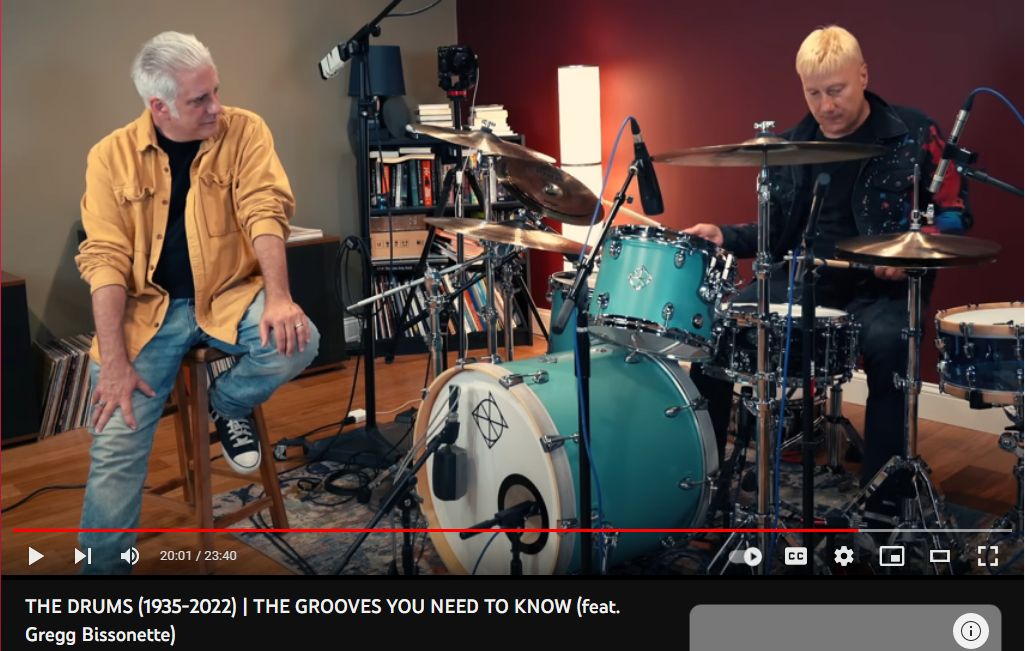Drums and Grooves w Gregg Bissonette
Drum grooves are rhythmic patterns played by drummers that form the foundation of a musical piece. Grooves typically consist of repeating patterns of beats and accents that establish the tempo, feel, and groove of a song. Drum grooves can vary widely in style, complexity, and feel, depending on the genre of music and the preferences of the drummer.
Here are some common types of drum grooves found in various genres of music:
1. Rock Grooves: Rock grooves often feature a strong backbeat on beats 2 and 4, played on the snare drum, with the bass drum providing a steady pulse on beats 1 and 3. Rock grooves can range from simple and straightforward patterns to more intricate and syncopated rhythms.
2. Funk Grooves: Funk grooves are characterized by their emphasis on syncopation, rhythmic complexity, and tight, funky feel. These grooves typically feature a prominent bass drum and snare drum interplay, with ghost notes, accents, and offbeat rhythms adding to the groove’s overall feel.
3. Blues Grooves: Blues grooves often have a laid-back, relaxed feel, with a steady shuffle rhythm and a focus on dynamics and feel. These grooves typically feature a swung eighth-note feel, with the snare drum often playing a backbeat on beats 2 and 4.
4. Jazz Grooves: Jazz grooves can vary widely depending on the subgenre of jazz, but they often feature a swinging feel, with an emphasis on improvisation and interaction between the drummer and other musicians. Jazz drummers often use brushes or mallets to achieve a softer, more subtle sound.
5. Latin Grooves: Latin grooves encompass a variety of rhythmic patterns from genres such as salsa, bossa nova, samba, and more. These grooves typically feature intricate polyrhythms, syncopated accents, and a strong emphasis on groove and feel.
6. Hip-Hop Grooves: Hip-hop grooves are characterized by their use of drum machines, samples, and electronic beats. These grooves often feature repetitive, looped patterns with heavy bass and snare hits, along with additional percussion elements such as hi-hats, claps, and shakers.
These are just a few examples of the many types of drum grooves found in music. Drummers often experiment with different grooves and rhythms to create unique and compelling musical arrangements that complement the style and feel of a song.
